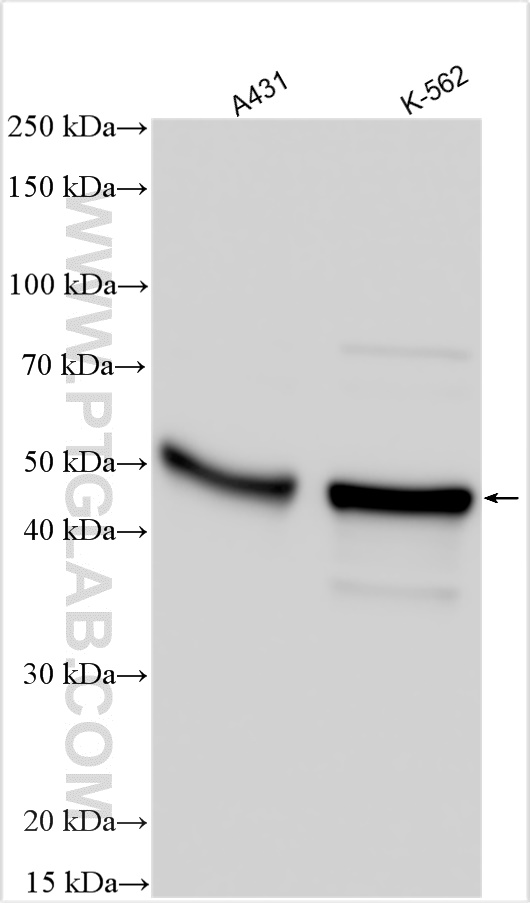验证数据展示
经过测试的应用
| Positive WB detected in | A431 cells, K-562 cells |
推荐稀释比
| 应用 | 推荐稀释比 |
|---|---|
| Western Blot (WB) | WB : 1:2000-1:12000 |
| It is recommended that this reagent should be titrated in each testing system to obtain optimal results. | |
| Sample-dependent, Check data in validation data gallery. | |
发表文章中的应用
| WB | See 1 publications below |
产品信息
24433-1-AP targets LYAR in WB, ELISA applications and shows reactivity with human, mouse samples.
| 经测试应用 | WB, ELISA Application Description |
| 文献引用应用 | WB |
| 经测试反应性 | human, mouse |
| 文献引用反应性 | human |
| 免疫原 | LYAR fusion protein Ag19599 种属同源性预测 |
| 宿主/亚型 | Rabbit / IgG |
| 抗体类别 | Polyclonal |
| 产品类型 | Antibody |
| 全称 | Ly1 antibody reactive homolog (mouse) |
| 别名 | LYAR, ZLYAR |
| 计算分子量 | 379 aa, 44 kDa |
| 观测分子量 | 44 kDa |
| GenBank蛋白编号 | BC015796 |
| 基因名称 | LYAR |
| Gene ID (NCBI) | 55646 |
| RRID | AB_2879547 |
| 偶联类型 | Unconjugated |
| 形式 | Liquid |
| 纯化方式 | Antigen affinity purification |
| UNIPROT ID | Q9NX58 |
| 储存缓冲液 | PBS with 0.02% sodium azide and 50% glycerol pH 7.3. |
| 储存条件 | Store at -20°C. Stable for one year after shipment. Aliquoting is unnecessary for -20oC storage. |
背景介绍
LYAR, also named as ZLYAR, is 379 amino acid protein, which contains 2 C2H2-type zinc fingers. LYAR is expressed at at high levels in immature spermatocytes, early embryos and in fetal liver and thymus ,with low expression in kidney and spleen. It is suggested that LYAR participates in regulating the stability of C23, a protein that is critical for maintaining the self-renewal and differentiation of embryonic stem cells.
实验方案
| Product Specific Protocols | |
|---|---|
| WB protocol for LYAR antibody 24433-1-AP | Download protocol |
| Standard Protocols | |
|---|---|
| Click here to view our Standard Protocols |
